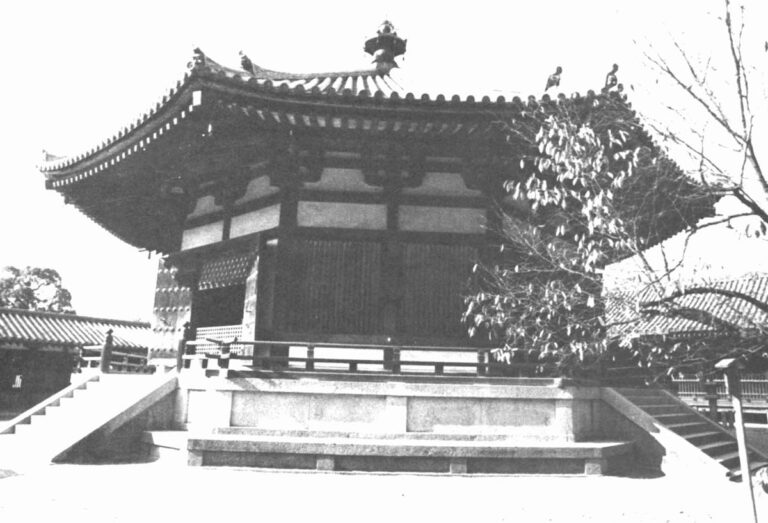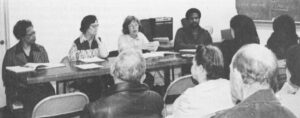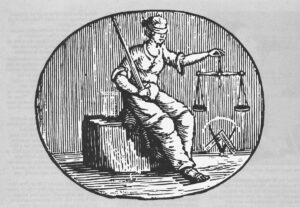TOKYO–There is a dark side to Japan’s glittering economic miracle. The brown cloud of photochemical smog that often hovers over Tokyo, the phosphate-choked waters of the Inland Sea and the dying cedars around the Tokugawa Shoguns’ shrine at Nikko are part of the price paid for more than two decades of headlong industrial growth.
The Japanese have had their Love Canal disasters as early as twenty years ago and have opted for a form of social accounting which tallies a production cost that does not normally find its way into a businessman’s ledger column: the cost of pollution. The principle is that the victim is entitled to the compensation and that “the polluter pays.” The practice is often to determine the price of pollution, like wages, through a form of collective bargaining, presided over by the government’s Environmental Disputes Coordination Commission, a creative blend of conciliation agency and science court. The bargains are not always struck easily, nor quickly. But, while environmental mediation in the United States is still in its infancy, (*See “Bachman’s Warbler” – October 1980), agreements in Japan routinely emerge through a voluntary process founded upon impartial technical inquiry.
Headed by a chairman of cabinet rank, the commission annually mediates dozens of major disputes, each involving millions of dollars, between industrial enterprises and persons whose health or property has been injured by hazardous wastes. It succeeds in most cases, even though it lacks coercive powers.
“The victims of pollution are ordinary citizens without power,” says Sadanori Nagayama, the courtly director-general of the commission’s executive office. “We offer them three main advantages: speed, inexpensiveness and simplicity. Before we were created 10 years ago, environmental disputes could only be solved by going to court, which is time-consuming, has complicated procedures and takes attorneys- and money. The lawyers are busy enough.”

Nagayama’s office sits at the apex of a nationwide network of prefectural (county level) and municipal conciliation agencies that annually receive about 70,000 complaints of pollution damage. The most important disputes filter up to the commission, which has established itself as an attractive alternative to litigation because of the contrast with Japan’s lumbering judicial system. Lawsuits typically drag on for more than 10 years, consuming legal fees voraciously. The commission, however, usually takes less than two years, sometimes as little as a year. And the fees, figured on a sliding scale pegged to the amount claimed, start at an unarguably competitive $2.25. Lawyers are unnecessary. Moreover, the discussions take place in private, a feature of the commission’s approach that many companies, who would otherwise hold out in court, find appealing. Besides, says Nagayama, sometimes “even the companies feel better paying and getting it over with.”
The commission also has an extra-judicial asset–it can make its own assessment of the extent and cause of pollution damage. Nagayama presides over a staff of specialists in agriculture, forestry, fishery, health and welfare administration, trade and industry. “We conduct some studies and experiments ourselves,” says the director-general, whose office in the Chiyoda section, Tokyo’s administrative quarter, is decorated with a geological wall map of Japan and stacks of dossiers in stiff black covers fastened with string. “But more than half (of the studies] are done by outside research organizations, such as universities, at the commission’s expense.”
The research reports may become starting points for discussions between the disputants. But, says Nagayama, “We don’t necessarily show the results of our studies to the parties. They are like reference materials. We listen to both sides, talk separately to them about amounts. Then we may make a recommendation as to a reasonable amount of compensation, trying it out on both sides. The studies are merely basic material with which we make an effort to bring both sides closer.”
Minamata Disease
The technical questions involved are often complex issues of establishing cause-and-effect relationships between novel medical syndromes and noxious effluents. Japan has had the dubious honor of giving names to a host of previously undiagnosed afflictions caused by air pollution or contamination of water and soil by toxic metals-mercury, cadmium, chromium, copper and arsenic. The most notorious of these is “Minamata disease,” an often fatal disorder first identified in the late 1950s and traced to the eating of shellfish in Minamata Bay, off the southwestern tip of Kyushu Island. The seafood had become laden with a mercury compound discharged by a fertilizer plant. Other illnesses followed. “Itai-Itai” (literally, ouch-ouch) appeared in Toyama Prefecture, north of Tokyo. Caused by rice contaminated with cadmium, it depletes calcium levels in the body and leads to bone deformation. “Yokkaichi asthma” is a respiratory malady linked to by air pollution from the petrochemical complexes in its namesake city, a coastal town in central Honshu.
In the case of Minamata disease, which is thought to affect about 10,000 persons, the grim effects are now well connected to their cause, and the commission’s role has been to help determine the size of the compensation whenever the local authorities certify a patient as an “official victim.” In other cases, however, the commission’s inquiries often break new scientific ground. It is now trying to determine, for example, whether water discharged by a sewage treatment plant in Sendai, northeast of Tokyo, could have damaged edible seaweed being cultivated nearby. A claim for about 1.7 billion yen (about $8 million) was filed by a producer’s cooperative with 1,000 members. “In cases brought to the national level, their complainant is more likely to be a group or individuals who have formed a group,” says Nagayama, “because pollution on this scale affects many people.”
Japan’s intensely used coast-more than half of the shoreline of the main islands has been altered by reclamation or other engineering work-produces many cases for the commission. A group of ocean-going fishermen complained that 80 paper mills, lining both banks of a river on the island of Shikoku, had been discharging waste that reduced their catch. “We asked the companies to designate representatives,” says Nagayama, “and they sent us three negotiators. At first they seemed surprised because they had assumed that the damage must have been minor.” However, they changed their attitude when the commission produced studies, done by a government fishery agency, on the effects of waste water when carried by ocean currents. The fishermen and the companies’ representatives met formally seven times. After 11 months, the two sides came to an understanding: the companies agreed to compensate the fishermen, apportioning the cost among themselves, and to begin anti-pollution measures.
“Our method of meeting is very flexible,” says Nagayama. “Sometimes the parties meet face to face, but we may listen to one side in one place and the other side in another place.” The formal meetings usually take place around the U-shaped table in the commission’s hearing room. Presiding is a mediating team typically composed of three of the seven commissioners, who serve five year terms. At the moment, the commission is composed of three lawyers, a physician, an engineer and two former government officials. The chairman is retired judge Yoshito Aoki.
Earth, Fire and Water
The commission has dealt with complicated soil pollution controversies as well as water disputes. In the Ashio Copper Mine case, farmers contended that slag from mining operations leached into river water used to irrigate rice paddies. The commission had soil samples taken and subjected them to chemical and statistical analysis. Confronted with evidence of serious copper contamination, the mining company agreed to pay the farmers for crop losses and to have new topsoil laid over their fields. The work, which is still underway, will cost more than $7 million.
“If a cause and effect relationship is clearly established,” Nagayama explains, “the company will naturally feel obligated to pay. But even if there is some question concerning the cause-and-effect, some companies will still pay, just to get along. In general, companies agree to settlements not to avoid future lawsuits but because enterprises must live in harmony with their neighbors. If they find they can settle a dispute by paying compensation, they are willing.”
This may seem a singularly generous attitude for a profit-making enterprise, but often the neighbors will make a reciprocal gesture of harmony. When the Chisso Corporation, owner of the Minamata fertilizer plant, encountered financial difficulties because of the indemnities it paid the victims, the surrounding region floated a bond issue to provide loans to keep the company solvent.
In resolving environmental disputes, the commission may resort to techniques other than mediation. On occasion, the parties will ask the commission to arbitrate the dispute, handing down a decision that becomes legally binding. A panel of three commissioners then hears the case and issues an award. In rare instances, however, an alleged polluter may be unwilling to enter into discussions with the complainants. The commission is empowered in such cases to render an “adjudication”; the commission simply determines an appropriate level of compensation and notifies both parties. However, the reluctant party can file an appeal within 30 days. The main penalty for refusing the invitation to the negotiating table is the loss of privacy: the adjudication will be made public.

Of course, either side can storm out of the discussions and go to court at any time. Nagayama admits that it sometimes happens, especially when one party is unhappy with the technical report. (The report, however, cannot be used as evidence in a legal proceeding unless both sides agree.) Some major categories of potential complainants have avoided the commission altogether. It has jurisdiction over noise pollution by the “Skinkansen,” the famous bullet train that rattles between Tokyo and Kyushu at speeds of up to 125 MPH. Yet when the residents of Nagoya, which is along the track, decided to challenge the noise levels, they chose to go to court. “Sometimes,” concedes Nagayama, “people are looking for a more binding result.”
Those who go to court often are seeking to prevent pollution-causing plants, such as power generators, from being opened. The commission, as Nagayama readily admits, cannot provide a remedy for damage that may occur in the future. But, as a judicial decision on the island of Hokkaido last October demonstrated, judges, too, are unwilling to entertain speculative claims. The court rejected a demand by residents that it prohibit the Hokkaido Electric Power Company from building a power plant that would cause air pollution, on the ground that it would violate “environmental rights” supposedly guaranteed by the constitution. The court said that the “legal concept of such ‘rights’ is unclear.” Such defeats for the environmental movement reinforce the role of the commission as a practical alternative for assuring that there is at least redress when actual damage can be shown.
Could It Work For Us?
Neither side of the environmental issue is entirely satisfied with the “polluter pays” system. By introducing remarkable productivity gains, Japanese industry has largely managed to achieve sustained growth despite the cost of combating and compensating for pollution. But the economy, many Japanese believe, is now moving from the rapid growth stage to a mature, “stable” phase in which that cost will become more burdensome. Keidanren, the political organization that represents major Japanese enterprises, recently made known its dissatisfaction with the burgeoning outlays of a government program of compensating air pollution victims through a tax on firms that emit sulfur dioxide and other atmospheric contaminants. Keidanren contends that many of the supposed victims, such as those with asthma, are really suffering from natural diseases, and it expresses annoyance that the number of official victims keeps rising even though air quality is improving.
On the other hand, conservationists like Jun Ui of Tokyo University, the author of Polluted Japan, argue that the compensation system does not recognize what he calls “invisible pollution” from such nonwaste substances as agricultural chemicals and food additives. The conservationists are also unhappy that environmental impact statements for proposed projects are still not required by law in Japan, and they caution that the compensation should not obscure the need for protective measures.
Still, the polluter-pays principle is firmly entrenched and is likely to remain a well-used method of determining how much is paid. There may be something in the Japanese ambience that makes this peculiarly possible. Perhaps a sense of obligation to community tempers the profit motive of Japan’s industrial corporations; perhaps the victims of pollution are more understanding of the basic need to produce. But nothing suggests that these attitudes are traceable to peculiar national values. Japan has become so thoroughly Western in its embrace of technology that its success in apportioning the costs of environmental destruction consensually is persuasive evidence that the West could do it as well.
©1981 R. V Denenberg
R. V Denenberg concludes his fellowship study on Alternatives to Traditional Courts with this issue.






